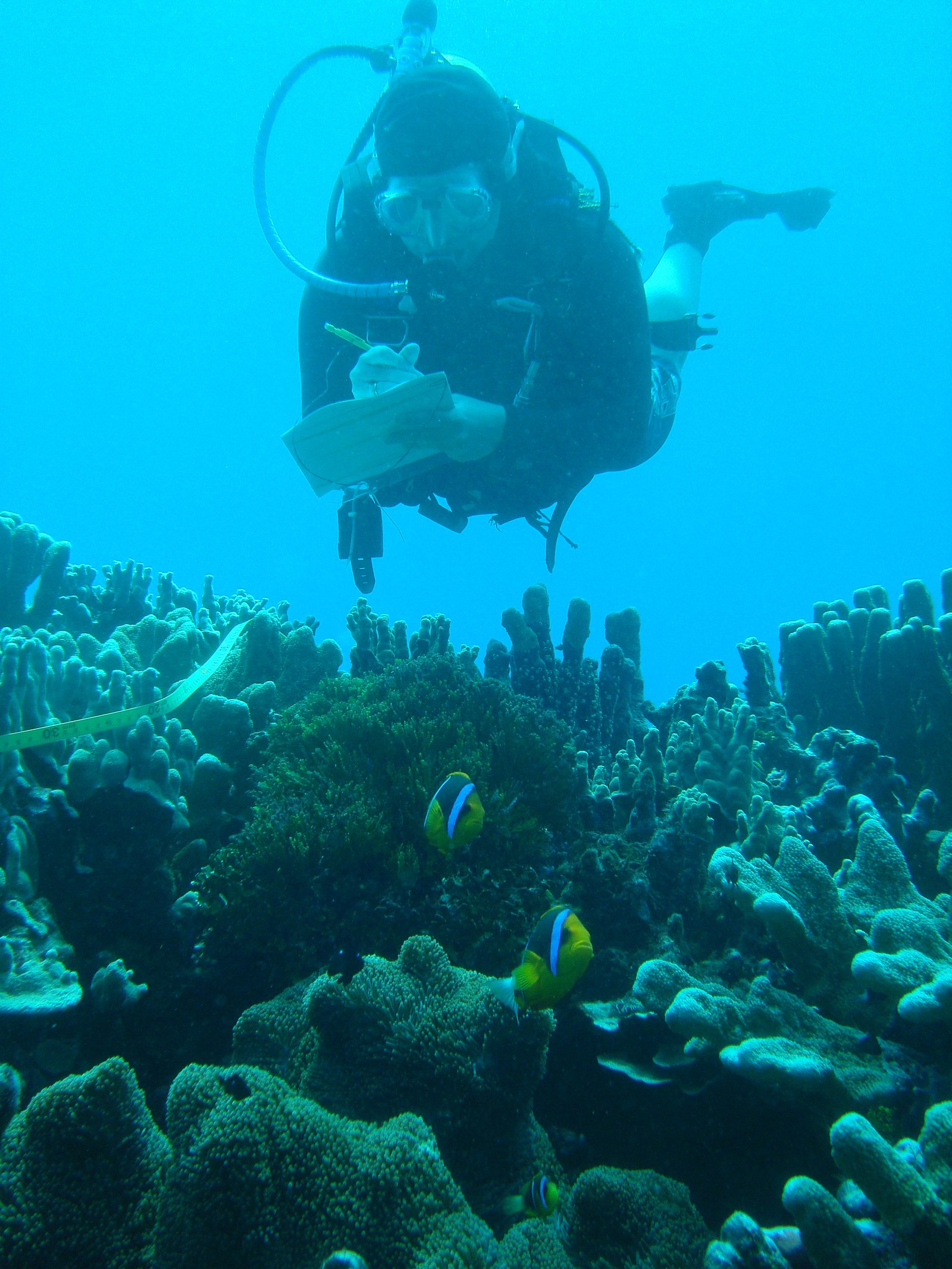Corals of Kosrae - The Island of the Sleeping Lady
Covered with rainforests, waterfalls, and fringed by primeval mangrove swamps, Kosrae the "Island of the Sleeping Lady" is one of the world’s most pristine and beautiful inhabited tropical islands. Kosrae is the most easterly island in Micronesia, and has been a renowned landmark amongst Pacific Mariners for centuries.
Occurring north of the equator and 340 miles southeast of Pohnpei, the 43 square mile island of Kosrae is somewhat less renowned for the coral reefs that surround it even though coral reef resources have helped to sustain people from the Caroline Islands for centuries.

© Katrina Adams
Today, local impetus for marine conservation in Kosrae is strong. In 1997, a community project brought together fishermen, government staff and dive operators to install 56 mooring buoys around the island. This impressive mooring system is maintained by the local conservation agency and partners and has been a highly successful local conservation initiative.
In addition, numerous marine protected areas have been established around Kosrae including the Trochus Sanctuary, Blue Hole Clam Sanctuary, Utwe - Walung Marine Park and Utwe Biosphere Reserve. These local conservation initiatives are highly commendable. However, taxonomic expertise is not available locally so I was keen to continue to support the local conservation efforts by providing the local marine conservation agency with species-level information about the coral communities around Kosrae.
With the assistance of local partners, we conducted replicated coral biodiversity and benthic cover surveys at 22 sites around the island including one site (Malem) that is earmarked to become a new marine reserve. I was astounded at the high level of live coral cover at the majority of sites (often over 60%); the abundance of large mature colonies; and the overall health of the coral community.

© Australian Museum
Unlike Australia, the extensive mangrove system at Kosrae contains very clear water so the corals reefs extend right into the mangroves. It was fascinating to see corals and reef fish living in the mangroves and particularly unusual to find colonies of Acropora growing in this environment.
With great anticipation we surveyed the blue hole which was the final resting place of Kosraen kings after temporary burial in the coral pyramids of Insaru (see Corals of Kosrae - The Lelu Ruins). This was the first time any locals had dived to the bottom of the blue hole so it was a pleasure to experience this moment with the local collaborators - Osamu, Marston and Ben.
While the bones are presumably decomposed and covered in sediment, we found some unusual aggregations of basalt rocks which may possibly have been used to sink the woven mats that contained the sacred bones.
Through this research, quantitative coral biodiversity data will enable spatial comparisons to be made with neighboring regions and will help to maximize the likelihood that coral biodiversity can be protected in the future.
This research project was funded by the Australian Museum Foundation.

